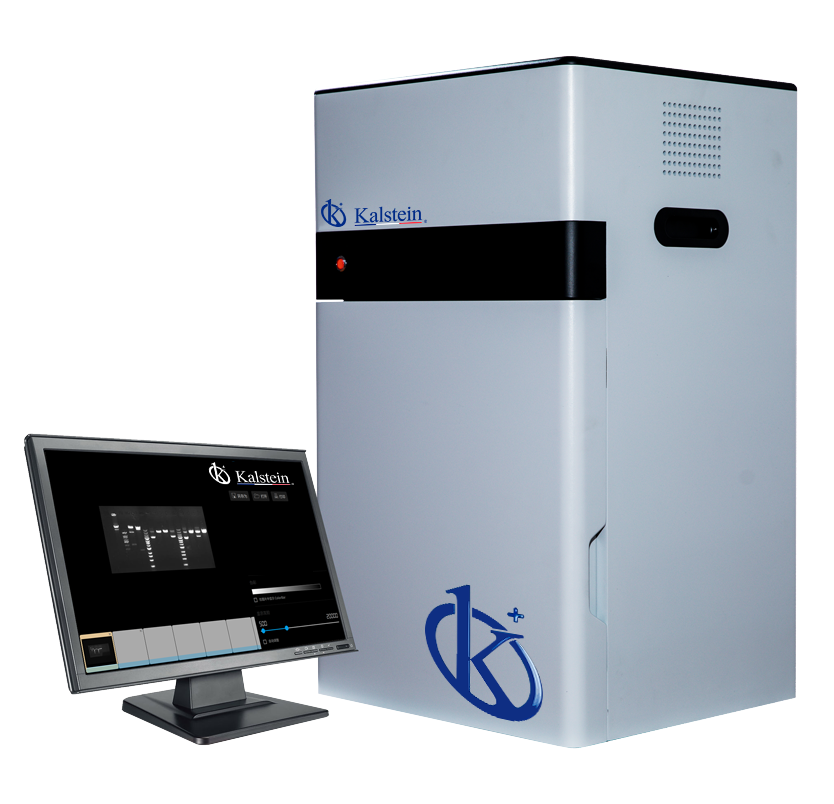A documentation system of electrophoresis gels consists of a composite equipment that is used to observe, take photos and analyze the bands of the gels that are generated from electrophoretic runs. Innovative equipment with state-of-the-art technology is designed to produce sharp, high quality images, which in turn provides better analysis and provides the user with a results backup system. Using a gel documentation system saves reagents and time.
These equipment allows the reading of the results quickly, accurately, reduces the probability of human error when analyzing and quantifying the results, because it allows to observe those bands that are not seen with the naked eye, such as those observed by fluorescence, thanks to the presence of a series of specialized elements that allow capturing the image. This is achieved by a stand-alone unit with an integrated computer and touch screen that generates high quality, high resolution images that can be easily stored on a USB drive or transferred via an optional network connection to an external computer for later use.
How is a gel documentation system composed?
A gel documentation system is a sophisticated equipment whose composition and structure will depend on the different brands and existing models, some will be manual, others automatic, more advanced and integrated with different accessories, however, we can find that its main parts are: an optical system, controlled darkness system, lighting system called Transiluminador, and a computer. Among the main uses of gel documentation systems are:
- They are used to observe, take pictures, and analyze bands of the gels after electrophoresis.
- They offer the digitalization of all kinds of DNA gels, proteins and nucleic acids.
- They document protein gels stained with fluorescent dyes.
- They provide documentation of nucleic acid gels stained with ethidium bromide or SYBR green and chemiluminescent signals.
- They are used in research laboratories and other areas such as cell therapies, biomedical research, quality control, genetics laboratory, molecular biology.
Main applications of gel documentation systems
Electrophoresis gel documentation systems are used to record, measure and quantify labeled nucleic acid and proteins in various media types such as agarose, acrylamide or cellulose. These systems have a wide variety of configurations depending on performance and sample type. Among its main applications we have:
- Binding affinities to monoclonal and polyclonal antibodies.
- Images of gel and stain.
- Colony count.
- Immunoassay.
- Multiplex protein detection.
- Characterization of post-translational modification.
- 2D electrophoresis.
- Quantification of proteins.
At Kalstein we have electrophoresis gel documentation systems that allow the detection, quantification and analysis of proteins or nucleic acids in gels and membranes. Our documentation systems feature advanced software that provides rapid automated data acquisition, analysis, and validation. These devices can be used for the detection and automated analysis of data with all methods of staining and marking proteins and nucleic acid.
What does Kalstein offer you?
Kalstein is a manufacturer of medical and laboratory equipment of the highest quality and the best technology at the best PRICES in the market, so you can make your PURCHASE confidently with us, knowing that you have the service and advice of a company specialized in the field and committed to provide you with safe, economical and effective options to perform your functions in the right way.
This time we present our Gel System YR04961 – YR04962. This innovative equipment with cutting edge technology has the following features:
- The gel analysis and documentation system is designed for the detection and documentation of nucleic acids and proteins.
- It adopts a high-resolution, high-sensitivity scientific CCD camera, which allows the instrument to capture absolutely weak signals in extremely low-light conditions.
- The automated controls and intuitive software we offer can help researchers get rid of the complicated operation process and thus increase the efficiency of the experiment.
- Miscellaneous dyes, e.g.: etidium bromide, SYBR ™ Gold, SYBR ™ Green, SYBR ™ Safe, GelStar ™, Texas Red, Fluorescein, DNA detection / RNA labeled.
For more information we invite you to take a look HERE

